Sealife guideThe portuguese man o' warPhysalia physalis
Last updated on 09/03/2025 at 11:26 PM
With its gelatinous body and tentacles, the Portuguese man o' war is not actually a jellyfish despite appearances, but rather a hydrozoan !
The Portuguese man o' war is commonly called by that name because of its resemblance to Portuguese sailing ships from the Middle Ages, but it is also known as the bluebottle due to its bladder-shaped body that floats on the ocean surface.
Taxonomy
- Common name: Portuguese man o' war, Portuguese man of war
- French name: Galère portugaise, physalie, vessie de mer
- Scientific name: Physalia physalis (Linnaeus, 1758)
- Family name: Physaliidae
- Order name: Siphonophorae
- Class name: The hydrozoans [Hydrozoa]
Habitat
The Portuguese man o' war is a marine species that drifts at the surface of seas and oceans with winds and currents.
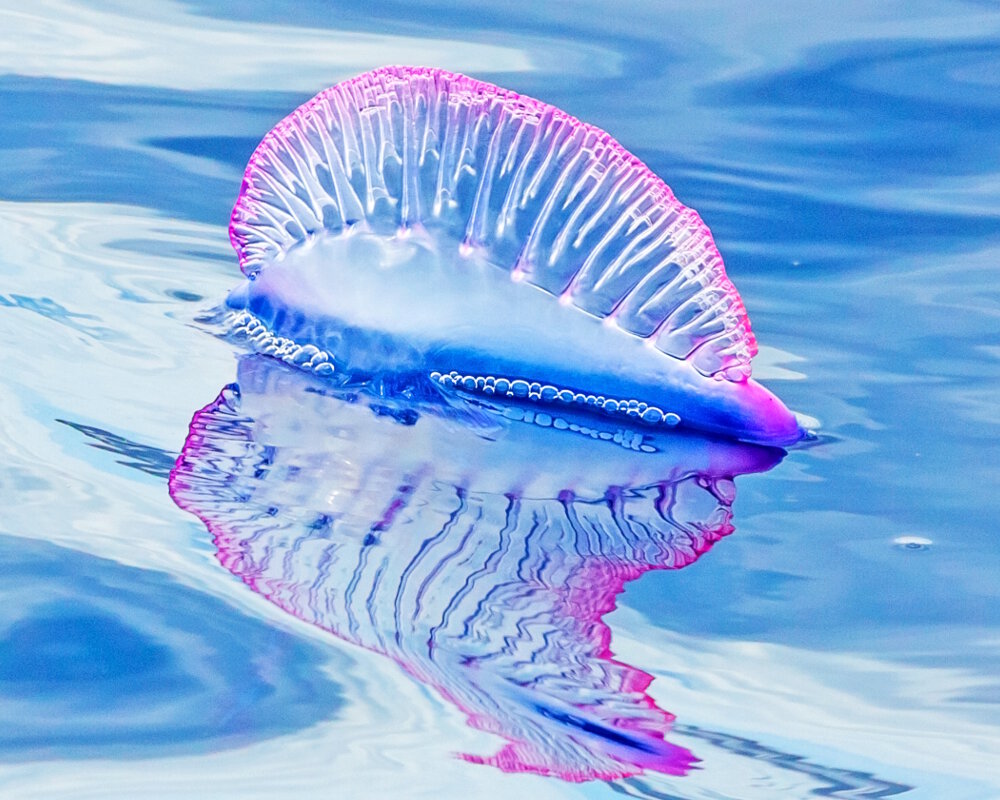
The portuguese man o' war (Physalia physalis) © Aldorado10 | Dreamstime.com
Reproduction
The Portuguese man o' war is hermaphroditic and reproduces sexually in spring and summer. Male and female gametes are released into the seawater where fertilization occurs. The resulting larvae are planktonic and eventually develop into adult colonies.
Did you know ?
The venomous tentacles of the Portuguese man o' war can break off and drift independently. Detached tentacles are even more dangerous, since without the floating body they provide no warning signal for nearby swimmers.
Contact with a Portuguese man o' war causes immediate and very painful skin lesions similar to burns or hives.
Later, more severe symptoms may appear, such as dizziness, fainting, rapid heart rate and high blood pressure, abdominal or muscle pain, difficulty breathing, vomiting or fever.
Tips for observing
Never touch a Portuguese man o' war, even one washed up dead on the beach, as its stinging power remains intact !
Discover also
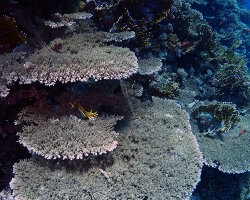
Acropora cythereacoral
(Acropora cytherea)
(Acropora cytherea)
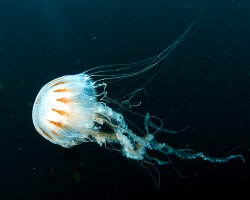
Atlantic sea nettle
(Chrysaora quinquecirrha)
(Chrysaora quinquecirrha)

Big siphonophore
(Forskalia edwardsii)
(Forskalia edwardsii)

Bladed fire coral
(Millepora complanata)
(Millepora complanata)
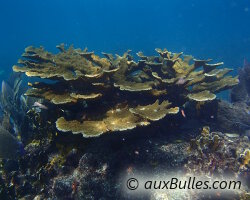
Elkhorn coral
(Acropora palmata)
(Acropora palmata)
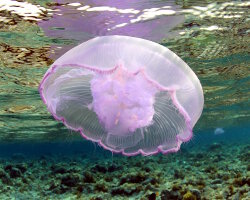
Moon jellyfish
(Aurelia aurita)
(Aurelia aurita)
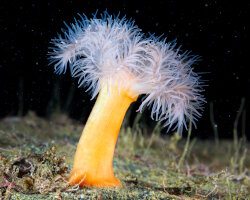
Plumose sea anemone
(Metridium senile)
(Metridium senile)

Staghorn coral
(Acropora cervicornis)
(Acropora cervicornis)
Our latestUpdates

Friday, November 28th 2025
Disney Hollywood Studios, from Star Wars to Toy Story
Dive into the magical world of Disney's Hollywood Studios: Star Wars and Toy Story attractions and shows for the whole family.

Wednesday, November 19th 2025
Tenerife island
Tenerife, the largest of the Canary islands, is a volcanic gem in the Atlantic ocean. It boasts an incredible variety of landscapes, from golden or black sand beaches to the subtropical forests of the Anaga mountains and the majestic Teide volcano, Spain's highest peak. With its picturesque villages, rich local culture and countless outdoor activities, Tenerife is a perfect destination for every type of traveler.

Saturday, November 15th 2025
Batz island
Located in the English Channel off the northern coast of Brittany, just a few kilometers from the town of Roscoff, Batz island is a true little haven of peace where you can enjoy its wild landscapes, unspoiled beaches and historical heritage.
Photo of the Day

Rouget barbet doré
(Parupeneus cyclostomus)
(Parupeneus cyclostomus)
